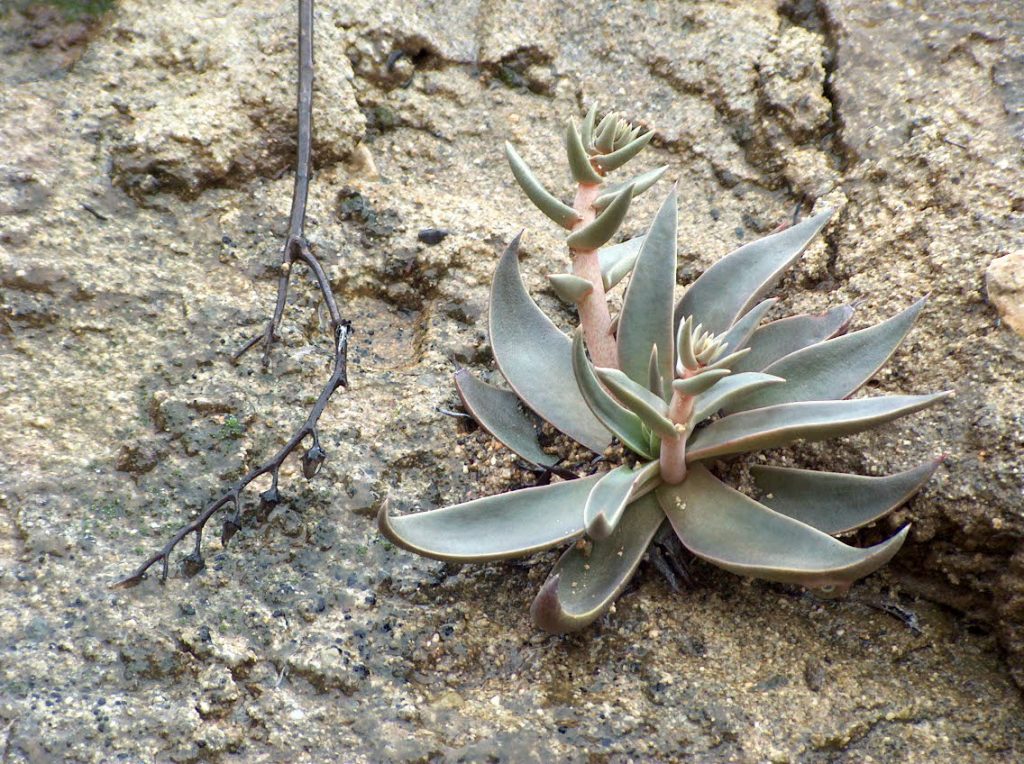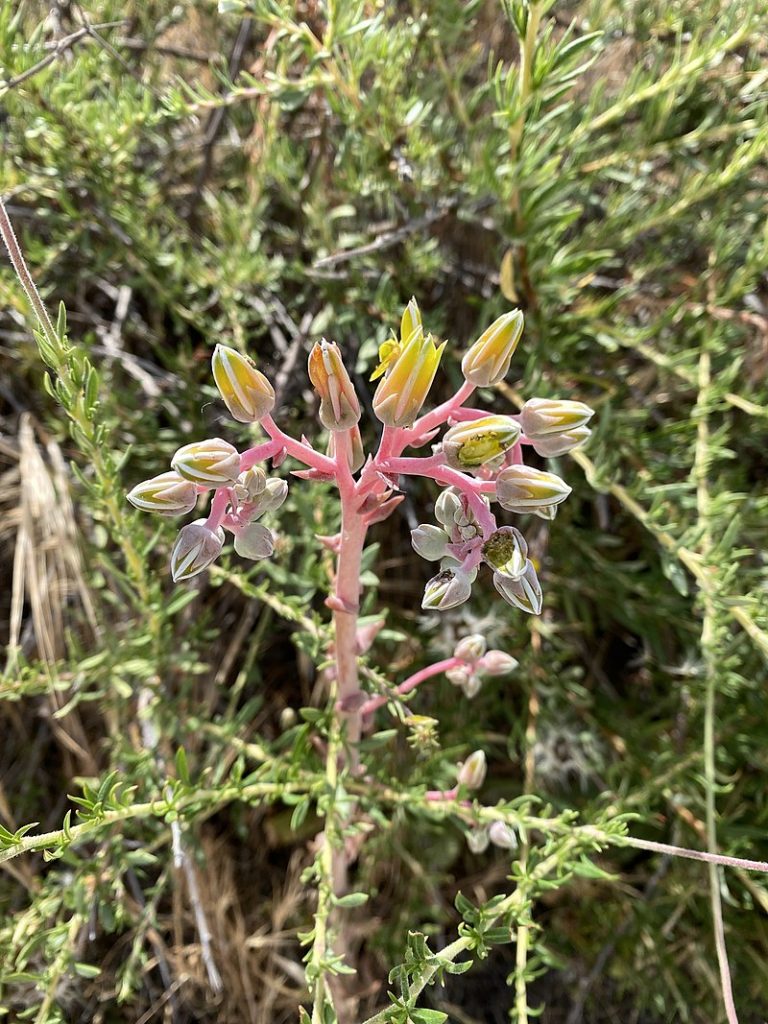
Native to the mountains of southern California and Baja California, where it is found in rocky areas and slopes, this evergreen perennial succulent is a member of the stonecrop family, Crassulaceae, that also includes sedum, jade plant, and hens and chicks. The plant forms a star-shaped basal rosette of 10-25 flat, spade-shaped leaves that are up to 12″ long, green, sometimes purple or with a white , powdery coating. From spring to summer, branched cymes with 2-20 small flowers appear. The flowers are red or orange, sometimes yellow to purplish red, very rarely green, and are attractive to hummingbirds and bumble bees. Lanceleaf liveforever requires very little water, may go dormant during dry weather in the summer, and is a good choice for a rock garden or container. The genus name, Dudleya, honors William Russel Dudley (1849 – 1911), a botanist who taught at Cornell and Stanford. The specific epithet, lanceolata, is from the Latin word lancea, meaning lance, and refers to the shape of the leaves. Photo Credit Joe Decruyenaere Wikimedia Commons

Type: Evergreen succulent perennial
Bloom: Branched cymes with 2-20 small flowers that may be red, orange, sometimes yellow to purplish red, rarely green, in spring and summer
Size: 12″ H x 12″ W
Light: Full sun
Soil: Rocky, dry, well-drained but tolerates clay if moisture scant
Hardiness: Zones 9-10
Care: Low maintenance
Pests and Diseases: Mealybugs, aphids
Propagation: Division of offsets; seed very difficult
Companion Plants: Woolly bluecurls, chamise, Yucca spp., chaparral mallow
Outstanding Selections: Unknown
Photo Credit: Rachel Whitt Wikimedia Commons